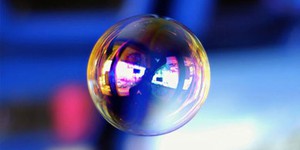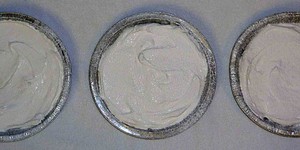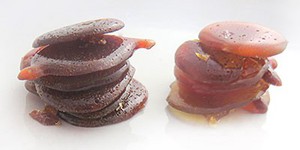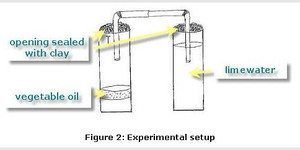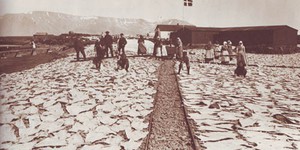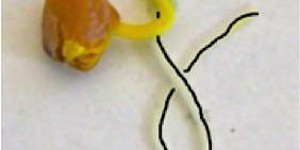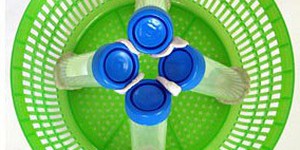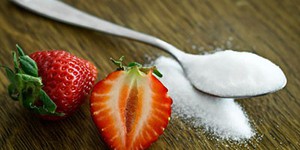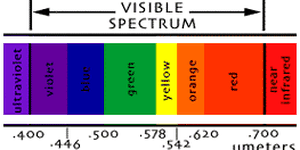Others Like “Study Chirality with a Homemade Polarimeter” (top 20 results)
|
Making your own bubble solution is fun, but sometimes the bubbles don't seem to work as well as the solutions you buy in the store. In this experiment you can test if adding corn syrup or glycerin to your bubble solution will make it just as good as the stuff you can buy. This experiment will have you blowing bubbles!
Read more
Whether you are sitting around a campfire, or drinking hot chocolate after a day in the snow, nothing says fun quite like a marshmallow! Even its name is soft and spongy! In this cooking and food science fair project, you will make your own marshmallows several different ways, and discover the three special ingredients that give marshmallows their unique texture. You will also find out why they melt so quickly. Explore the science of these sticky, spongy sweets!
Read more
Maple syrup is deliciously gooey and great on breakfast foods like pancakes and waffles. But it has another amazing property. It can be turned into maple candies with a range of textures, like sticky maple taffy or molded maple sugar candy. In this science fair project, you will investigate how the temperature that maple syrup is heated up to affects what type of maple syrup-based candies can be made.
Read more
Did you ever wonder how yeast makes bread dough rise? This project will show you what yeast does to make this happen. You'll also investigate the conditions yeast needs to grow.
Read more
It's the bottom of the ninth, and you've spent a great afternoon at the ball game with a hotdog, a soda, and an ice cream in hand, but I'll bet you're not thinking about how many crops went into those classic baseball snacks. Sure, the bun contains wheat, but did you know that the hotdog might contain wheat, too? And soybeans may have been used to give that ice cream its perfectly smooth texture, while corn was likely used to sweeten the entire meal! Crops can be changed and added to processed…
Read more
You might not know it, but plants are able to sense their environment and actually respond appropriately. One of the key parameters that every plant must respond to is the direction of gravity: stems go up (opposite to the pull of gravity) and roots go down (in the same direction as the force of gravity). In this project, you will construct simple devices that hold several germinating seeds, which allow you to watch how growing rootlets respond as you rotate the devices, effectively altering…
Read more
It is fun to shake up a snow globe and watch the "snow" slowly fall. You can imagine that if the snow fell down very quickly it would be disappointing. But there are times when scientists in a laboratory want this to happen. Scientists use samples that have liquid mixed with small, solid pieces (like the inside of a snow globe), and they need all of the solid pieces in a clump, separated from the liquid. Instead of waiting for the pieces to slowly fall out of the liquid, scientists speed up…
Read more
Radiometers are fun-to-watch novelty items, but they also have a distinguished scientific history, having been studied by James Clerk Maxwell and Albert Einstein. A radiometer has a set of four vanes (like small sails) connected to a spindle that is free to rotate. When the radiometer is placed in bright light, the vanes and spindle start to spin. It looks like a magic trick, but there is a scientific explanation for this weird behavior. In this science fair project, you will experiment with…
Read more
Maple syrup on pancakes, ripe bananas, and soft drinks are all foods that are tasty to us
because of the sugar in them. But did you know there are different kinds of
sugar? One food can have multiple kinds of sugar in it, and our bodies actually process
the different types of sugars differently. In this science project, you will measure the
concentration of two sugars—glucose and sucrose—in different foods, and investigate how
sucrose is converted into glucose with the help…
Read more
Have you ever wondered what it would be like to have an extra sense? What if you could hear above the normal range (ultrasound) like dogs or bats? What if you could see ultraviolet light, like bees or juvenile trout? What if you could see infrared light, like a rattlesnake or boa constrictor? This project shows you how you can use a phone or camera, tripod, and a special filter to take pictures using near infrared illumination. It's a whole new way of looking at the world.
Read more
|
Explore Our Science Videos
Squishy Circuits Classroom Activity Part 1
How to Make a Bristlebot
Reaction Rates: When Surface Area Matters! Lesson Plan Introduction

